Mataerial by Petr Novikov, Saša Jokić, Joris Laarman Lab and IAAC
Plastic extruded from this robotic 3D printer solidifies instantly, allowing it to draw freeform shapes in the air extending from any surface (+ movie).
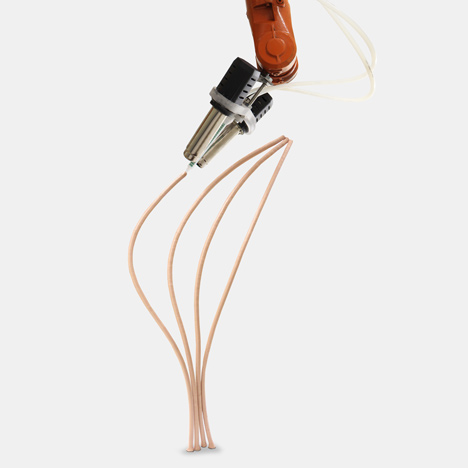
Unlike normal 3D printers that require a flat and horizontal base, Mataerial prints with plastic that sticks to horizontal, vertical, smooth or irregular surfaces, without the need for additional support structures.
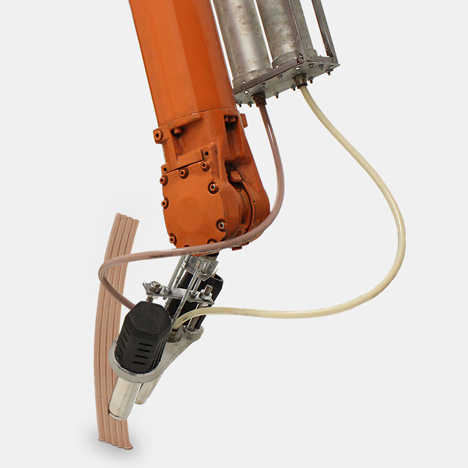
Petr Novikov and Saša Jokić from Barcelona's Institute for Advanced Architecture of Catalonia created the machine during their internship at Joris Laarman Lab, where students are given a platform to experiment with new digital fabrication methods.
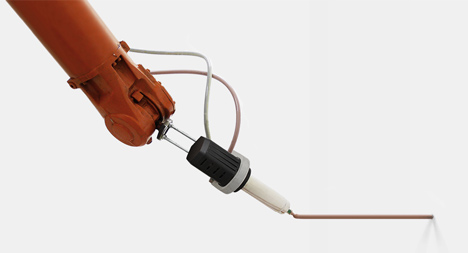
The process, which the designers call "anti-gravity object modelling", is a form of extrusion that instantly creates chunky three-dimensional rods, rather than slowly building up two-dimensional layers like a standard 3D printer.
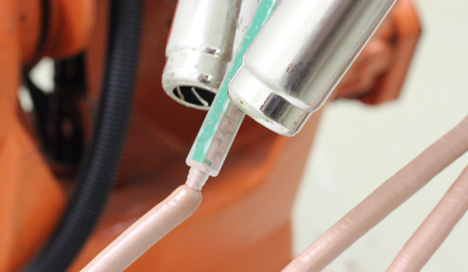
"One of the key innovations of anti-gravity object modelling is the use of thermosetting polymers instead of thermoplastics that are used in existing 3D printers," explained the designers.
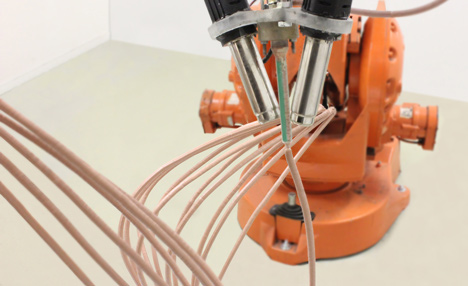
A chemical reaction between the two components of the thermosetting polymer causes the material to solidify as it comes out of the nozzle, making it possible to print hanging curves.
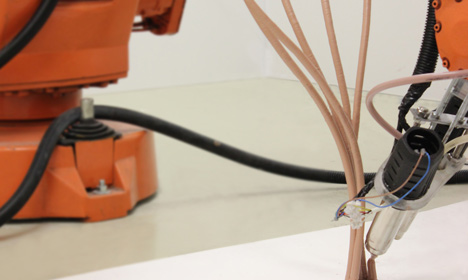
The speed of extrusion is dependent on factors such as the desired thickness of the material, but in this example the printer produced one metre in approximately three minutes. The movie's frame rate was increased up to three times to show the process more quickly.
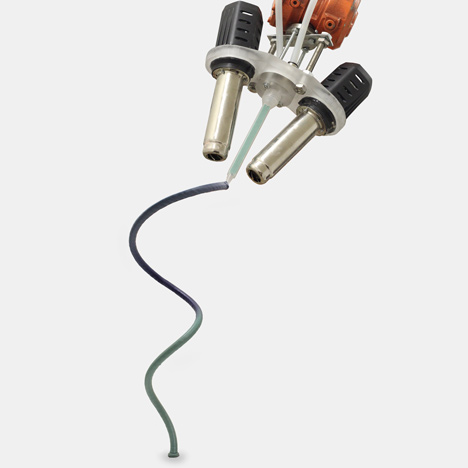
We recently featured a similar idea on a much smaller scale – a pen that can "print" 3D doodles in mid-air. See all 3D printing on Dezeen or check out Print Shift, our one-off magazine about additivie manufacturing.
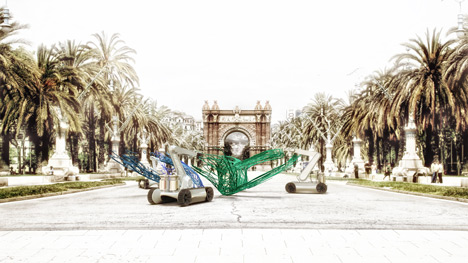
Last year Novikov was part of a team of students from the IAAC who built a robotic 3D printer that creates architectural structures from sand or soil.
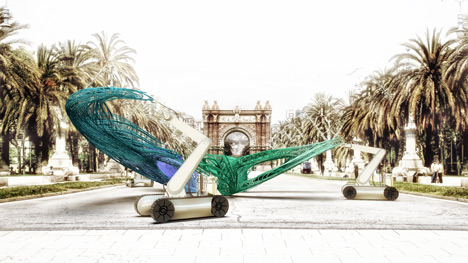
Joris Laarman's 2006 Bone chaise and mould design was acquired by the V&A museum in London last year – see all design by Joris Laarman.
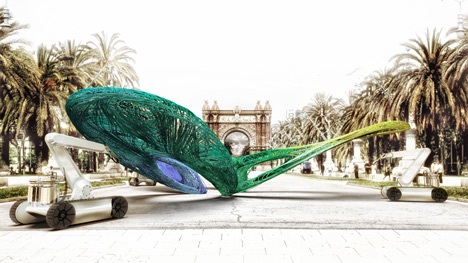
Here's some more information from the design team:
Mataerial is the result of the collaborative research between Petr Novikov, Saša Jokić from the Institute for Advanced Architecture of Catalonia (IAAC) and Joris Laarman Lab. IAAC tutors representing Open Thesis Fabrication Program provided their advice and professional expertise. During the course of the research we developed a brand new digital fabrication method and a working prototype that can open a door to a number of practical applications. The method that we call Anti-gravity Object Modeling has a patent-pending status.
Mataerial – a brand new method of additive manufacturing. This method allows for creating 3D objects on any given working surface independently of its inclination and smoothness, and without a need of additional support structures. Conventional methods of additive manufacturing have been affected both by gravity and printing environment: creation of 3D objects on irregular or non-horizontal surfaces has so far been treated as impossible. By using innovative extrusion technology we are now able to neutralise the effect of gravity during the course of the printing process. This method gives us a flexibility to create truly natural objects by making 3D curves instead of 2D layers. Unlike 2D layers that are ignorant to the structure of the object, the 3D curves can follow exact stress lines of a custom shape. Finally, our new out of the box printing method can help manufacture structures of almost any size and shape.
One of the key innovations of anti-gravity object modelling is the use of thermosetting polymers instead of thermoplastics that are used in existing 3D printers. The material is cured because of a chemical reaction between two source components with such proportion of extrusion and movement speeds that it comes solid out of the nozzle; this feature makes it possible to print hanging curves without support material.
The desired shape is created by user in CAD software and then transformed into 3d curves describing the shape which are then converted into movement paths for the robotic arm. The thickness of the printed curve can be scaled down to less than a millimeter and can be adjusted during the printing process, by changing the speed of the movement. Colors can be injected in the nozzle in CMYK mode that allows changing of the curve color throughout the printing process.
In our vision, Mataerial can be applied in different fields, from furniture and architecture manufacturing to desktop and space 3d printing.